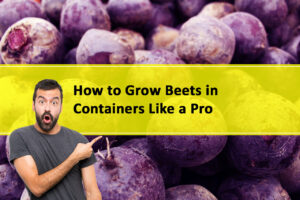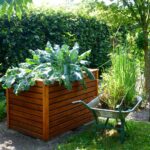Beautiful Plants For Your Interior
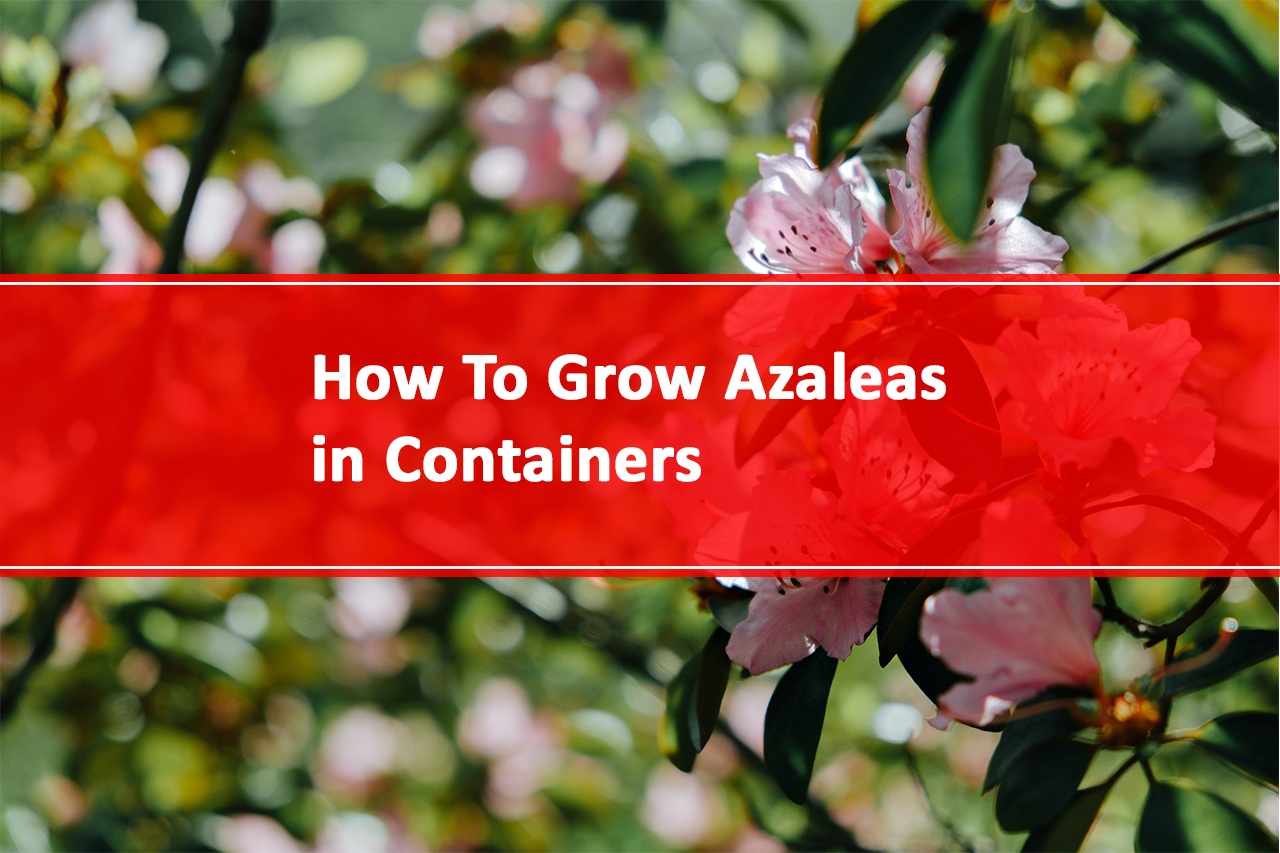
15 Tips To Grow Azaleas in Containers
Having trouble finding space to garden? Do you long to grow azaleas in containers but lack a sizable garden? Do not be alarmed! You may enjoy these beautiful flowering shrubs without the requirement for a sizable outside space by growing azaleas in pots, which is an excellent choice.
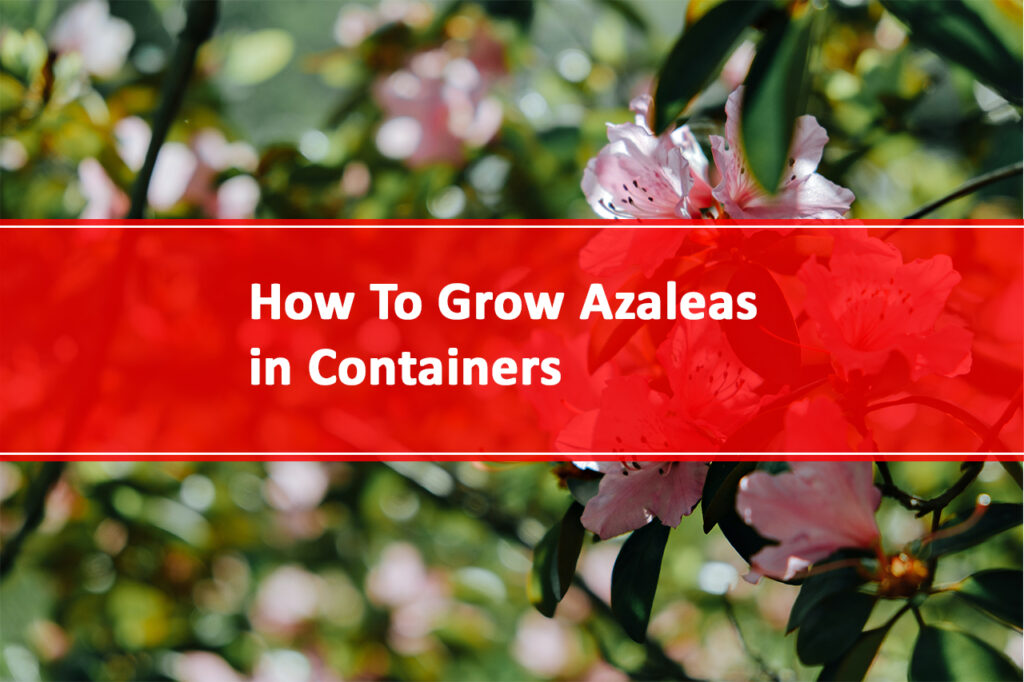
Join us as we present you with expert tips on how to grow azaleas in containers successfully. You can create a gorgeous azalea display in any place, even a small balcony, patio, or windowsill, which can brighten your home and make gardening more enjoyable.
Best Tips To Grow Azaleas in Containers
Selecting the Right Container
Choosing the right container is the first step to successful azalea cultivation. Opt for a container that is at least 18 inches in diameter to provide enough space for the azalea’s root system to grow and develop. Additionally, ensure that the container has drainage holes to allow excess water to escape. Proper drainage is crucial, as azaleas are susceptible to root rot in waterlogged soil. You can use various materials for the container, such as terracotta, ceramic, or plastic, but make sure it is sturdy and able to withstand outdoor conditions.
Soil Mix and pH
Azaleas prefer acidic soil with a pH between 4.5 and 6.0. To create the ideal soil mix, combine peat moss, pine bark, and perlite. Peat moss helps retain moisture, while pine bark provides good aeration and drainage. Perlite, being lightweight, further enhances drainage. Avoid using regular garden soil, as it may have a higher pH and poor drainage, which can lead to nutrient deficiencies and root problems.
Sunlight Requirements
Azaleas thrive in dappled sunlight or partial shade. Choose a location for your containers where the plants will receive morning sunlight and afternoon shade. Too much direct sunlight can scorch the leaves, while too little light can result in poor flowering and weak growth. Balconies, patios, or areas under the shade of trees are great options.
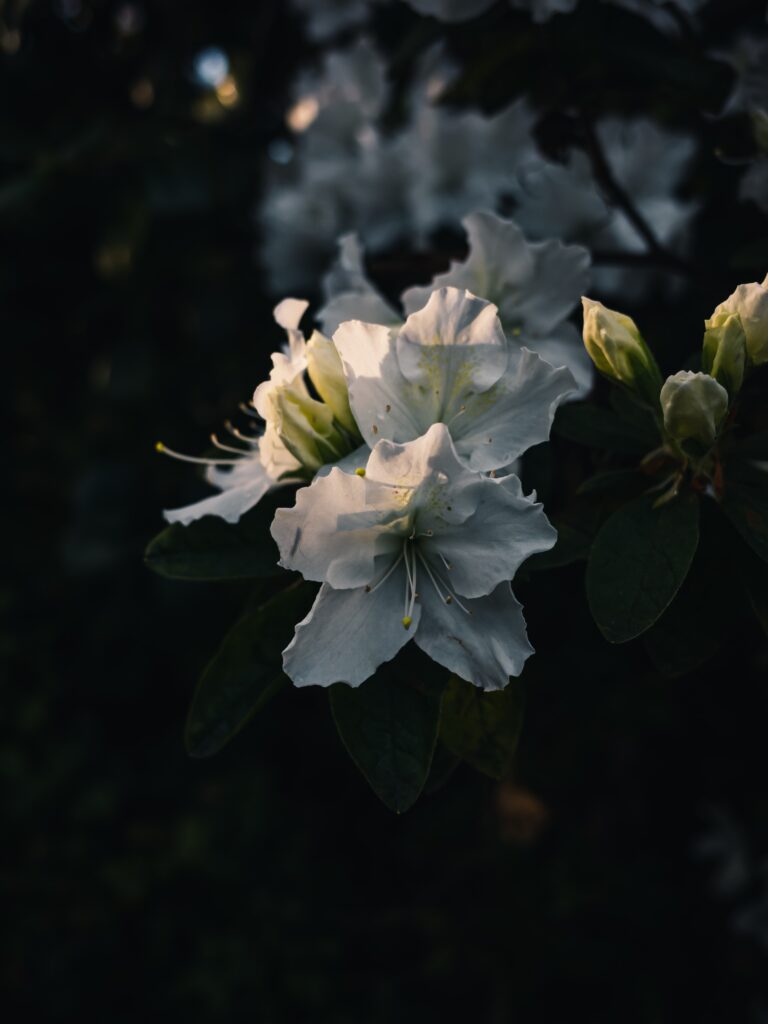
Watering
Consistent and adequate watering is vital for container-grown azaleas. The soil should be kept evenly moist but not waterlogged. Check the soil regularly, especially during hot weather, and water when the top inch of the soil feels slightly dry to the touch. Be cautious not to let the soil completely dry out, as this can cause stress to the plants and affect their health and blooming.
Mulching
Applying a layer of organic mulch around the base of your azaleas offers several benefits. Mulch helps retain soil moisture, reducing the frequency of watering. It also helps regulate soil temperature, keeping the roots cooler in hot weather and providing insulation during colder months. Organic mulches like pine straw or bark chips also contribute to soil acidity as they break down over time, which is beneficial for azaleas.
Fertilization
Container-grown azaleas need regular feeding to thrive. Choose a balanced, water-soluble fertilizer specifically formulated for acid-loving plants. Follow the manufacturer’s instructions on the frequency and quantity of application. Fertilize your azaleas during the growing season, typically from late spring to early summer. Avoid fertilizing in late summer or fall, as this can promote new growth that might not harden off before winter, making the plant more vulnerable to cold damage.
Pruning
Pruning is a critical aspect of maintaining healthy and attractive azaleas. Regular pruning helps remove dead or diseased wood, encourages new growth, and maintains the desired shape and size of the plant. It’s best to prune azaleas just after the flowering period to avoid cutting off next year’s flower buds inadvertently. Use sharp and clean pruning shears to make clean cuts, and avoid heavy pruning that might stress the plant.
Deadheading
Deadheading is the process of removing faded or spent flowers from the plant. This not only enhances the appearance of your azaleas but also encourages more blooms. Pinch off the faded flowers just above a set of healthy leaves or buds to promote new flower production. Deadheading also prevents the plant from putting energy into producing seeds and redirects that energy into healthy growth.
Pests and Disease Management
Regularly inspect your container-grown azaleas for any signs of pests or diseases. Common pests that may affect azaleas include aphids, mites, caterpillars, and lacebugs. If you notice any infestations, use appropriate organic insecticides or neem oil to control the pests. Additionally, ensure good air circulation around the plant to prevent the development of fungal diseases, such as powdery mildew.
Winter Care
Azaleas are sensitive to freezing temperatures, so it’s essential to protect them during the winter months. If you live in a region with harsh winters, move the containers to a sheltered location, such as a garage or basement, where the temperatures are more stable and moderate. You can also wrap the containers with burlap or hessian to provide extra protection from the cold. Avoid placing the containers against south-facing walls, as the temperature fluctuations can be more extreme.
Repotting
Container-grown azaleas may outgrow their pots over time, leading to restricted root growth and reduced vigor. Every two to three years, consider repotting your azaleas to provide them with fresh soil and more space to expand their root system. Spring, just after the blooming period, is the best time for repotting, as the plant is actively growing.
Choosing Azalea Varieties
When selecting azalea varieties for container gardening, opt for compact and dwarf cultivars. These varieties are well-suited to smaller spaces and won’t outgrow their containers too quickly. Some popular container-friendly azalea cultivars include ‘Autumn Jewel,’ ‘Hino Crimson,’ ‘Gumpo Pink,’ and ‘Poukhanense.’
Companion Planting
Complement your container-grown azaleas with other shade-loving plants to create an attractive and harmonious display. Consider planting ferns, heucheras, hostas, or other woodland perennials around the azaleas to add texture, color, and interest to your container garden. Ensure that the companion plants have similar light and water requirements as the azaleas.
Monitoring Humidity
Azaleas prefer a moderately humid environment, which can be challenging to achieve indoors or on dry balconies. To increase humidity levels around your container-grown azaleas, consider placing a humidity tray filled with water and pebbles nearby. As the water evaporates, it will create a more humid microclimate for the plants.
Protecting from Strong Winds
Strong winds can cause damage to the delicate foliage of azaleas and lead to dehydration. If you live in a windy area, position your containers near a windbreak, such as a wall, fence, or larger plants, to provide protection. Alternatively, you can use windbreak fabric or burlap to shield the plants from strong gusts while still allowing sufficient air circulation.
Benefits of Growing Azaleas in Containers
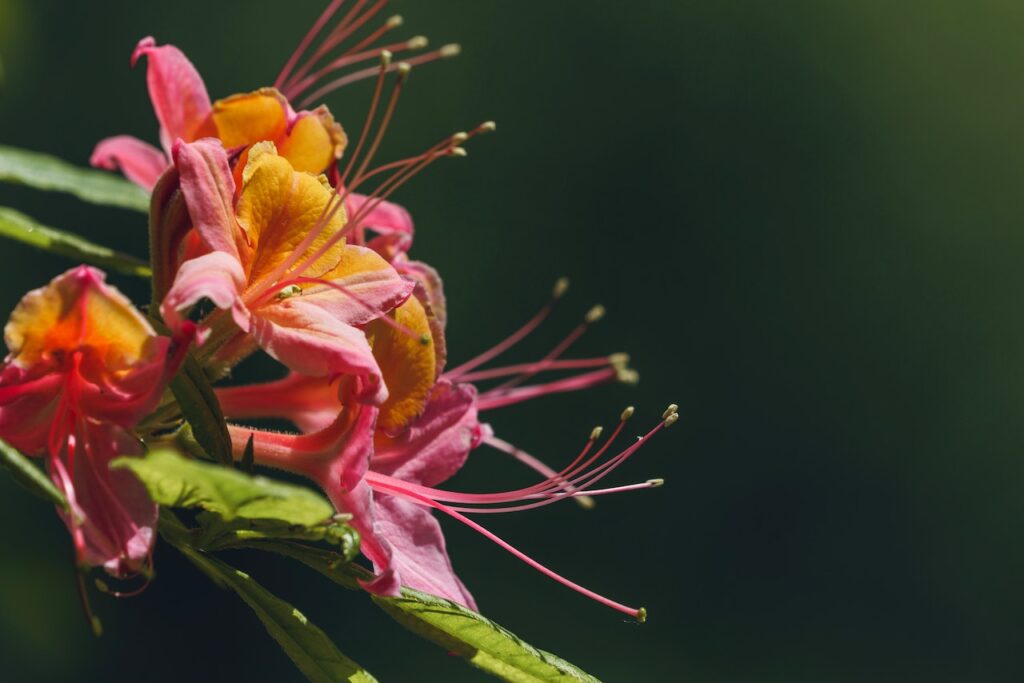
Growing azaleas in containers offers a plethora of benefits, making it an excellent option for gardeners with limited space or those seeking to add vibrant and colorful blooms to their living areas. Let’s explore these advantages in detail:
1. Space-Saving Elegance: One of the primary benefits of container gardening with azaleas is the space-saving aspect. Unlike traditional garden beds, containers can be placed on balconies, patios, porches, or even windowsills, transforming small areas into stunning floral displays. This makes azaleas an ideal choice for urban dwellers or individuals with limited outdoor space.
2. Versatility and Portability: Container-grown azaleas are incredibly versatile and portable. You can easily move the containers around to find the best light conditions or shield them from harsh weather. This flexibility allows you to experiment with various locations to optimize the azaleas’ growth and aesthetics.
3. Accessibility for All Gardeners: Container gardening with azaleas is accessible to all levels of gardeners, including beginners. The process is relatively straightforward, and caring for azaleas in containers is less labor-intensive compared to in-ground gardening. This makes it an excellent choice for individuals with limited gardening experience or physical mobility challenges.
4. Precise Control over Soil Conditions: Containers enable precise control over the soil mix and pH, creating the perfect environment for azaleas to flourish. By using an acidic soil mix, you can cater to the specific needs of these acid-loving plants, ensuring optimal nutrient absorption and healthy growth.
5. Improved Drainage and Root Health: Containers with proper drainage holes prevent waterlogged soil, which can lead to root rot in azaleas. This ensures healthier root systems, reducing the risk of root-related issues and promoting vigorous growth.
6. Enhanced Aesthetics and Display: Container-grown azaleas present a beautiful and eye-catching display. Their compact and colorful blooms create focal points that can enhance the aesthetics of any outdoor or indoor space. With various azalea varieties available, you can curate a diverse and stunning container garden.
7. Seasonal Decorations and Themes: Containers offer the flexibility to change and adapt the garden’s theme according to different seasons or occasions. You can mix and match azalea colors and other companion plants to suit festive celebrations or complement seasonal color schemes.
8. Protection from Garden Pests and Diseases: Keeping azaleas in containers can offer some protection from common garden pests and diseases. Elevated from the ground, container-grown azaleas are less susceptible to soil-borne pests and pathogens. Moreover, being in close proximity allows gardeners to spot and address pest issues promptly.
9. Indoor Gardening Option: Azaleas can thrive indoors when grown in containers, bringing nature’s beauty into living spaces throughout the year. Indoor container gardening with azaleas not only purifies the air but also creates a serene and calming ambiance.
10. Low Maintenance and Pruning Control: Container-grown azaleas generally require less maintenance than those grown in the ground. With controlled soil conditions and limited space, azaleas in containers tend to have slower growth rates, reducing the frequency of pruning and overall care.
11. Temporary Solution for Landscaping Plans: For gardeners who are redesigning their landscapes or waiting for permanent garden features to mature, container-grown azaleas can serve as temporary, movable elements. Once the landscaping is complete, the azaleas can be transplanted to other areas or incorporated into the new garden design.
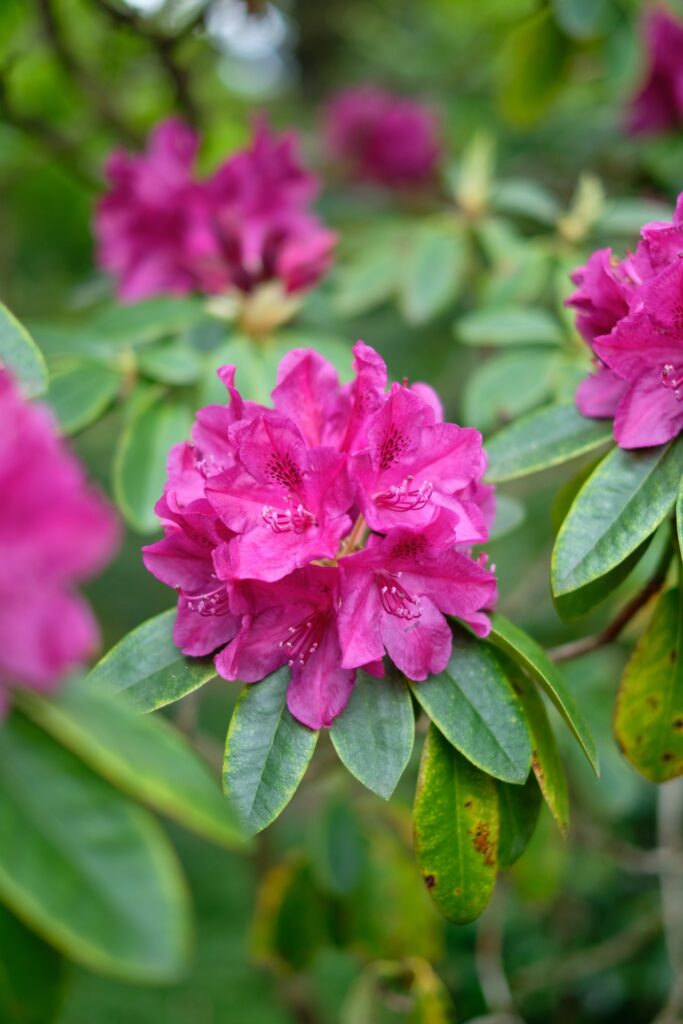
12. All-Year-Round Blooms: With proper care and attention, container-grown azaleas can bloom all year round, depending on the variety. This allows gardeners to enjoy their vibrant and captivating flowers regardless of the season.
13. Pollinator Attraction: Azaleas are attractive to pollinators, such as bees and butterflies, making them valuable contributors to local ecosystem health. By growing azaleas in containers, you can attract these beneficial insects to your balcony or patio, contributing to biodiversity and ecological balance.
14. Educational and Therapeutic Value: Container gardening with azaleas provides an educational opportunity for children and adults alike. Observing the plant’s growth stages and learning about its care fosters a deeper appreciation for nature and gardening. Additionally, gardening, including container gardening, has been shown to have therapeutic benefits, reducing stress and promoting mental well-being.
15. Sustainable Gardening Practices: Container gardening can be environmentally friendly, especially when using eco-friendly pots made from recycled materials. Additionally, growing plants in containers reduces the need for water and fertilizers, making it a sustainable and resource-efficient gardening option.
People also ask
-
What is the best potting soil for azaleas?
The best potting soil for azaleas is an acidic mix of peat moss, pine bark, and perlite. It provides good drainage, retains moisture, and creates an ideal environment for azaleas’ growth and health. Avoid regular garden soil.
-
Which are the best pots for azaleas plants?
The best pots for azaleas are those with sufficient drainage holes, at least 18 inches in diameter, and made of materials like terracotta, ceramic, or plastic. These pots provide proper aeration and space for the plant’s root systems to grow.
-
When do azaleas bloom?
Azaleas bloom in spring, usually from late March to early April, continuing through May. The exact blooming time can vary depending on the azalea variety and the climate of the region.
-
How often should I water azaleas in containers?
Keep the soil evenly moist, watering when the top inch feels slightly dry.
-
What type of container is best for azaleas?
Choose containers that are at least 12-16 inches deep and have drainage holes. Plastic, ceramic, or terracotta pots work well. Ensure the container is sturdy and won’t tip over easily.
-
When is the best time to plant azaleas in containers?
The best time to plant azaleas in containers is during the fall or early spring when the weather is mild. Avoid planting during extreme heat or freezing temperatures.
-
What type of soil should I use for container-grown azaleas?
Use a well-draining, acidic soil mix specifically designed for azaleas and camellias. You can find these mixes at garden centers or create one by combining peat moss, pine bark, and perlite.
-
Do azaleas need full sun or shade when grown in containers?
Azaleas prefer dappled sunlight or partial shade. Too much direct sun can scorch the leaves, while deep shade may inhibit flowering. Find a spot that receives morning sun and afternoon shade for optimal growth.
-
Can I repot my container azalea, and when should I do it?
Yes, you can repot your azalea if it outgrows its current container or if the soil has become compacted. The best time to repot is in early spring, just before new growth begins.
-
Can container-grown azaleas bloom all year round?
Container-grown azaleas typically bloom in spring, not year-round. Their flowering cycle lasts from late March to early June. Proper care promotes healthy growth and future blooms, but continuous year-round blooming is uncommon. Consider mixing with other plants for continuous container garden color.
Wrap up Growing Azaleas in Containers
In conclusion, growing azaleas in containers offers a myriad of advantages, from space-saving elegance and versatility to precise control over soil conditions and improved root health. Whether you’re a seasoned gardener or a novice, container-grown azaleas bring year-round beauty and joy to any living space, making them an excellent choice for gardening enthusiasts of all levels.

